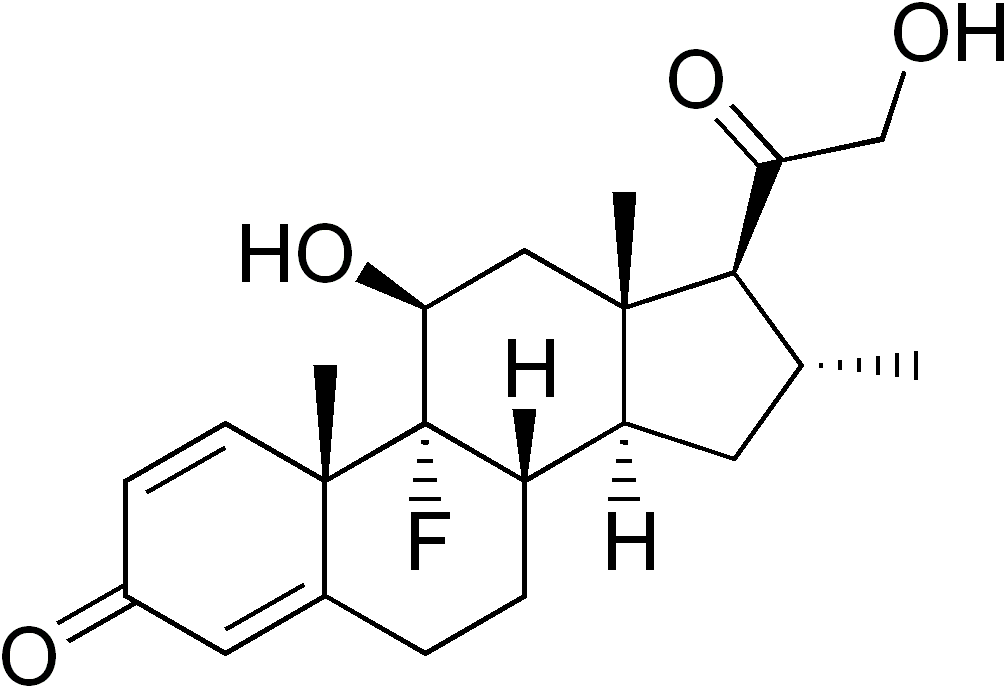| name | Desoximetasone |
| classification | Corticosteroid, Topical |
| pharmacokinetics | Desoximetasone is a topical corticosteroid primarily absorbed by the skin. Systemic absorption is generally minimal with topical use, but factors like formulation and application duration can affect absorption. The drug is metabolized in the liver and excreted in urine and feces. Individual factors (e.g., skin condition, formulation) can influence pharmacokinetic parameters. |
| dosage | Dosage depends on the specific formulation (cream, ointment, lotion) and the condition being treated. Consult a healthcare professional for appropriate dosage. |
| indications | Topical use for mild to moderate inflammatory skin conditions (eczema, dermatitis, psoriasis), rashes, insect bites, and other skin irritations. Professional medical advice is essential for proper indication and dosage. |
| pregnancy safety | Limited data on safety during pregnancy. Topical use is generally considered safe, but consult a physician for potential risks and benefits. |
| breastfeeding safety | Limited data on safety during breastfeeding. Potential for absorption and transfer to breast milk needs to be considered in conjunction with the benefit to the mother. Consult a healthcare provider. |
| side effects | | 1 | | type | common | | description | Skin irritation, redness, burning, itching, and dryness. |
| | 2 | | type | less_common | | description | Potential for more serious systemic effects with prolonged, high-dose use or large skin areas, such as adrenal insufficiency, growth changes, and increased susceptibility to infection. |
|
|
| alternative drugs | |
| contraindications | | 1 | Known hypersensitivity to desoximetasone | | 2 | Active skin infections (use should be avoided until infection clears) |
|
| interactions | Potential interactions with other topical or systemic medications are possible. Consultation with a pharmacist or physician is crucial if taking other medications. Some interactions with systemic corticosteroids are relevant and should be discussed with a doctor. |
| warnings and precautions | | 1 | Avoid contact with eyes. Flush with water if contact occurs. | | 2 | Do not use on large areas of skin or for prolonged periods unless directed by a healthcare professional. | | 3 | Patients with pre-existing skin conditions may require more careful monitoring. | | 4 | Monitor for signs of thinning skin, stretch marks, or bruising. | | 5 | Do not use on broken or infected skin. |
|
| additional information | Available in various formulations (cream, ointment, etc.) with varying strengths and intended uses. Follow instructions from healthcare provider and package insert. Avoid self-treating; seek medical guidance for proper diagnosis and treatment. |
| patient specific considerations | | 1 | | characteristic | age | | details | 25 years (potential impact on growth) | | relevance | important to consider |
| | 2 | | characteristic | weight | | details | 70 kg | | relevance | not a major factor for topical use |
| | 3 | | characteristic | gender | | details | male | | relevance | not a significant factor in this case |
| | 4 | | characteristic | concomitant_medications | | details | Presence of other medications | | relevance | important to consider |
| | 5 | | characteristic | allergies | | details | Known allergies | | relevance | important to consider |
| | 6 | | characteristic | skin_condition_details | | details | Specific characteristics of the skin condition | | relevance | important to consider |
|
|
